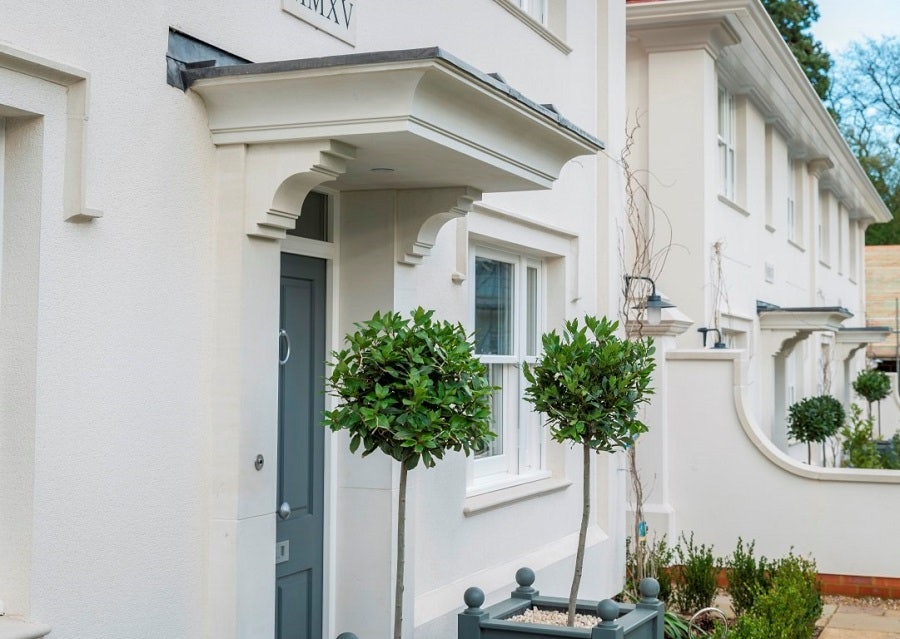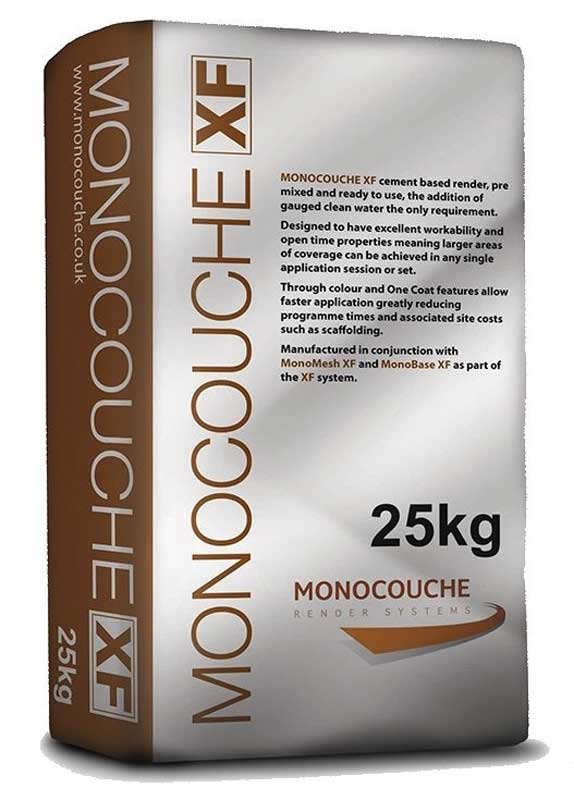Rendering a wall provides a protective barrier against weather elements such as rain, wind and sunlight, which helps to prevent moisture penetration and deterioration of the underlying structure.
What’s more:
Rendering enhances the aesthetic appearance of the wall, providing a smooth and uniform finish that can improve the overall visual appeal of the building.
At this point, you’re probably:
How do you render an outside wall?
To lend a hand, at Insulation Superstore we decided to put together an in-depth step-by-step guide on how to render a wall.
Without further ado, let’s crack on!
Table of contents
- What is rendering?
- Why is it important to render a wall?
- How to render a wall
- Why rendering your wall is a good idea
What is rendering?
Rendering a wall is the term used to describe the application of material to a wall to add a layer of protection.
Typically, rendering is the term used when this is done to exterior walls, and plastering is the term used when plaster is applied to interior walls – but sometimes these terms are used interchangeably.
Why is it important to render a wall?
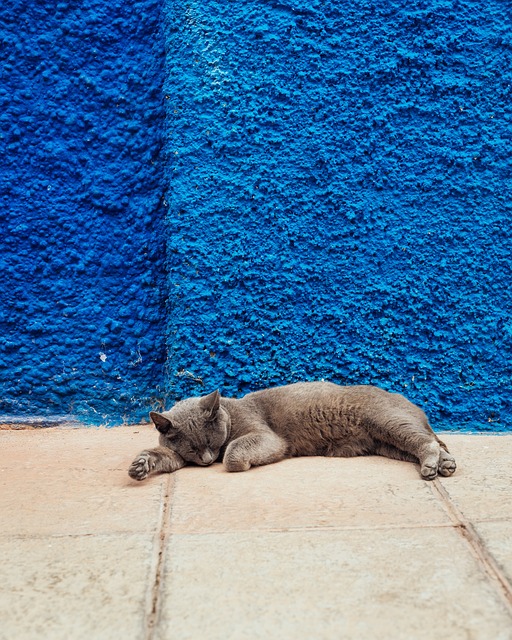
Protect the building structure
There are several reasons to render a wall, but one of the most important reasons for rendering a wall is for protection. The wall of your home or building is a key part of the structure, so it is crucial to keep it protected. Adding render to a wall protects the brickwork from the elements, reducing the wearing of the brickwork over time, and retaining the structural integrity of the building.
Aesthetics
As well as protecting the brickwork, adding render to the exterior of a property will create a uniform, clean and finished appearance, onto which you can then add paint to create the finish you want, instead of settling for open-faced brickwork. This is particularly beneficial if a range of different coloured bricks has been used in the construction of the building.
Protection from damp
Render on an external wall will act as a barrier to penetrating damp, which is a common issue with solid brick walls. Penetrating damp involves the long-term ingress of water moisture into solid brick, which can cause issues such as cracking and crumbling brickwork.
Insulation
Render is an extra layer that is added to an external wall, therefore improving the thermal properties and keeping the heat in. This can be significantly increased if an insulating render is used.
Alternatively, render can be used over the top of external insulating materials as a waterproof cover.
How to render a wall
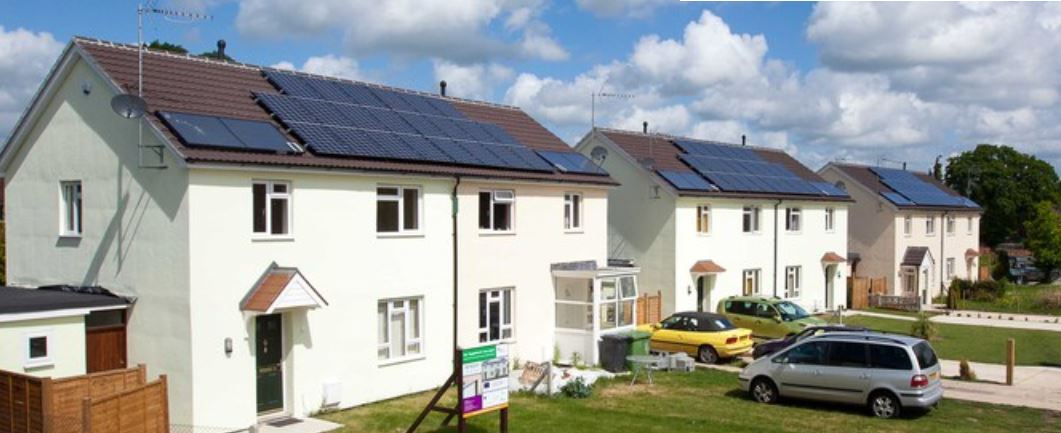
Step 1: Preparation
The first step when rendering a wall is to prepare the surface. This means any pre-existing render needs to be removed, and dust, debris and dirt need to be removed with a stiff dry brush. Additionally, use bleach or other cleaning solution to remove any mould, before washing the wall down with a hose to ensure the surface is completely free from debris.
Leave the walls to dry before applying the render – this could take a couple of days, depending on the weather.
Lay sheeting onto the floors around the wall, to prevent any render from falling onto the floor. The sheets can be anything from tarpaulin to rubbish bags or cardboard, as long as they cover the area – tape them to the ground to ensure they don’t move away from the edge of the wall.
If there is potential for rain whilst you’re working on rendering the wall, fix a tarpaulin or a form of protection to the top of the wall – any water can prevent the render from adhering to the wall.
Step 2: Mixing the render
Add the render mix to a bucket and follow the mixing instructions on the packaging. The typical proportions are roughly 8 litres of water to 20kg of render but aim for a paste-like consistency. To mix the render, use a shovel at first, and then attach a paddle mixer to a power drill to ensure the render is fully mixed.
Insulation Superstore Top Tip: Don’t forget to wash the render off the tools as soon as you’ve finished mixing the render; otherwise, it will harden, dry and will be almost impossible to get off.
Step 3: Applying the first coat of render
Move the bucket of render as close to the wall as you can, to prevent any wastage. To apply the render, take a trowel and add render to it. Then press the trowel onto the wall and move it upwards towards the top of the wall. Use as few motions as possible to create an even coat of render that is approximately 5mm thick.
Once you’ve added the first coat of render, take a timber batten and move it upwards to even out the surface – the movement should start at the bottom and go upwards to the top of the wall.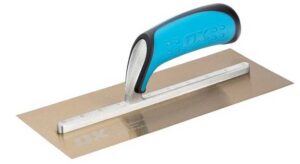
Once the surface is even, take a scratching comb to create lines horizontally across the surface. If you do not have a scratching comb, you can put several nails into a piece of wood and use this, or if you’re working on a small wall, simply go over the surface with a screwdriver. These lines don’t need to go right down to the original wall surface, but deep enough to provide a surface on which the second layer of render can adhere.
The render should then be left for up to two hours to dry and harden – check it occasionally after 30 minutes to see if it has begun to harden.
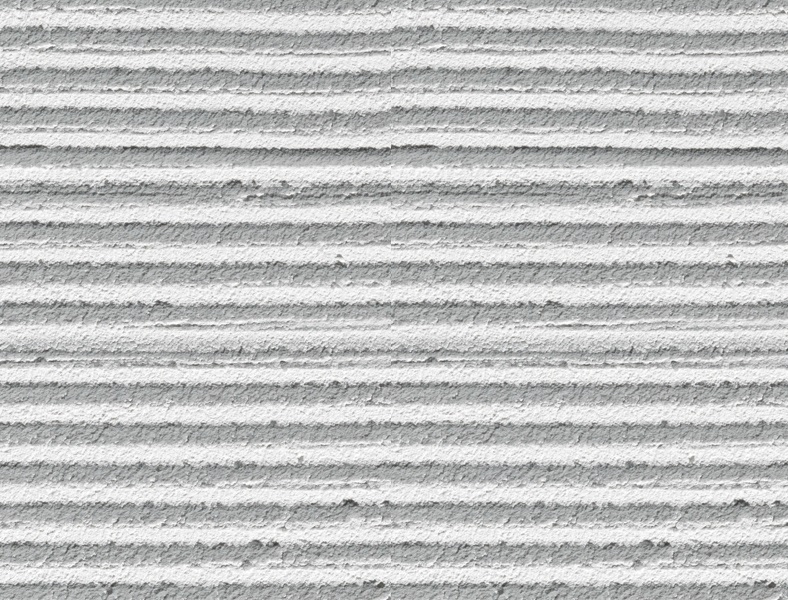
Step 4: Applying the second coat of render
Once the first coat of render is dry, you can apply the second coat to the wall. Use the same method as before, spreading a layer that is double the thickness (10mm) of the first application of render.
Leave the second coat of render to dry for around 30 minutes, then take the timber batten or straight edge to even out the coating – flatten any raised areas out, and use the excess to fill in any depressions or thinner parts of the coat.
Step 5: Finishing touches
Now take a slightly damp sponge and rub it gently against the wall. This ensures that the surface is left smooth, and also closes up any holes within the render. Make sure that the sponge is washed and cleaned regularly as any bits of dirt can cause scratches in the render.
Alternatively, if you want a textured or brushed finish, use a bristled brush instead of a sponge.
Now leave the wall to dry for 24 hours. Once that time has passed, spray the wall with water that is around room temperature once a day for 5 days. This will prevent the render from drying out too quickly, which can cause cracks and splits in the render.

Why rendering your wall is a good idea
Rendering a wall provides an additional layer of protection against weather elements, preventing moisture penetration and damage to the underlying structure.
It also enhances the aesthetic appearance of your walls, providing a smooth and uniform finish that can increase the value and kerb appeal of your property.
What’s more:
Rendering can improve the thermal efficiency of your home by helping to regulate indoor temperature, potentially reducing energy costs associated with heating and cooling.
While it may require some effort and attention to detail, rendering a wall is feasible for most engaged homeowners with the right approach and resources.
The best part:
Now that you know how to render a wall, you’re in a good place to take on this project.
If you have any questions about which render to use, don’t hesitate to call our team on 01752 692 206 or use the live chat and they will be more than happy to help.


